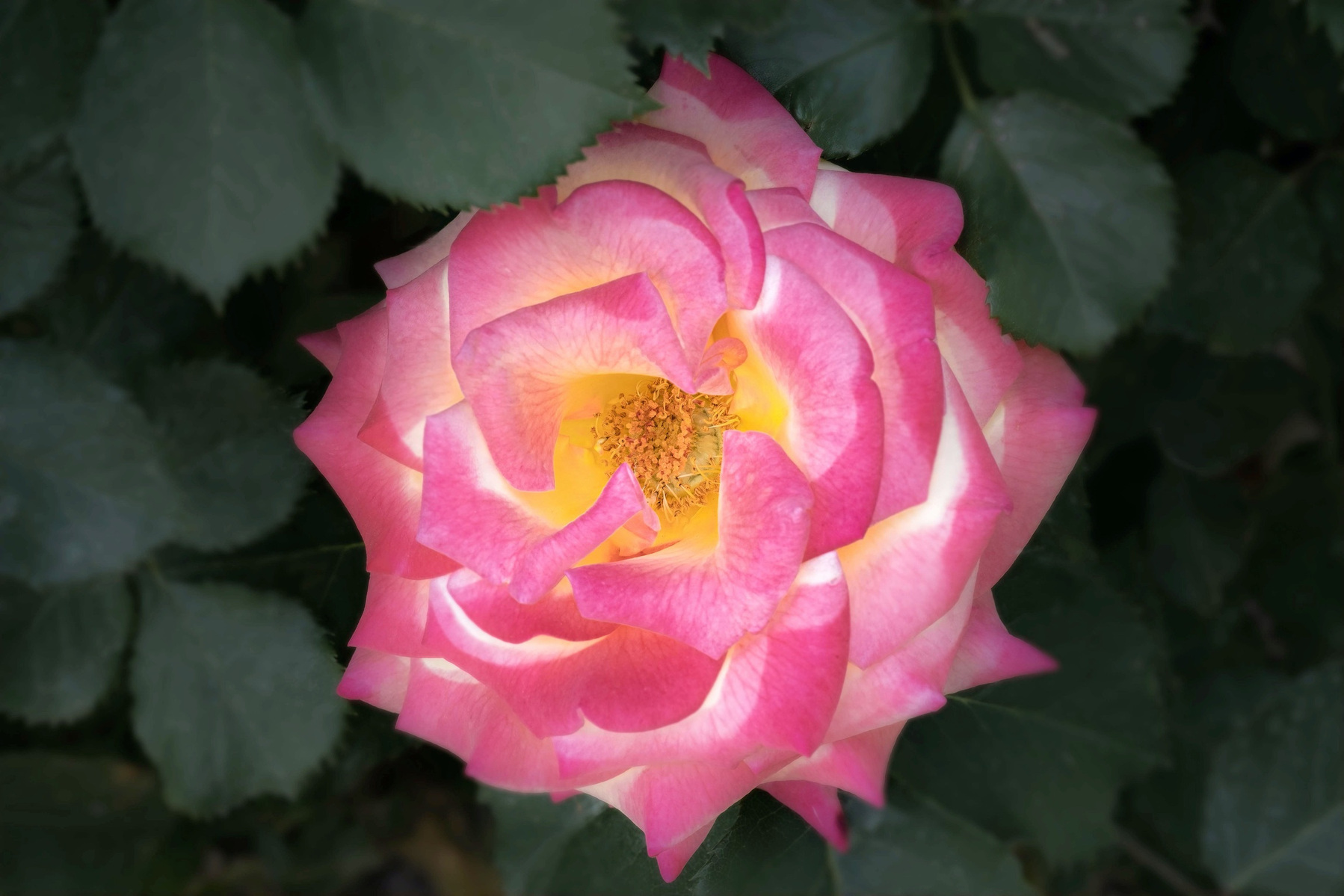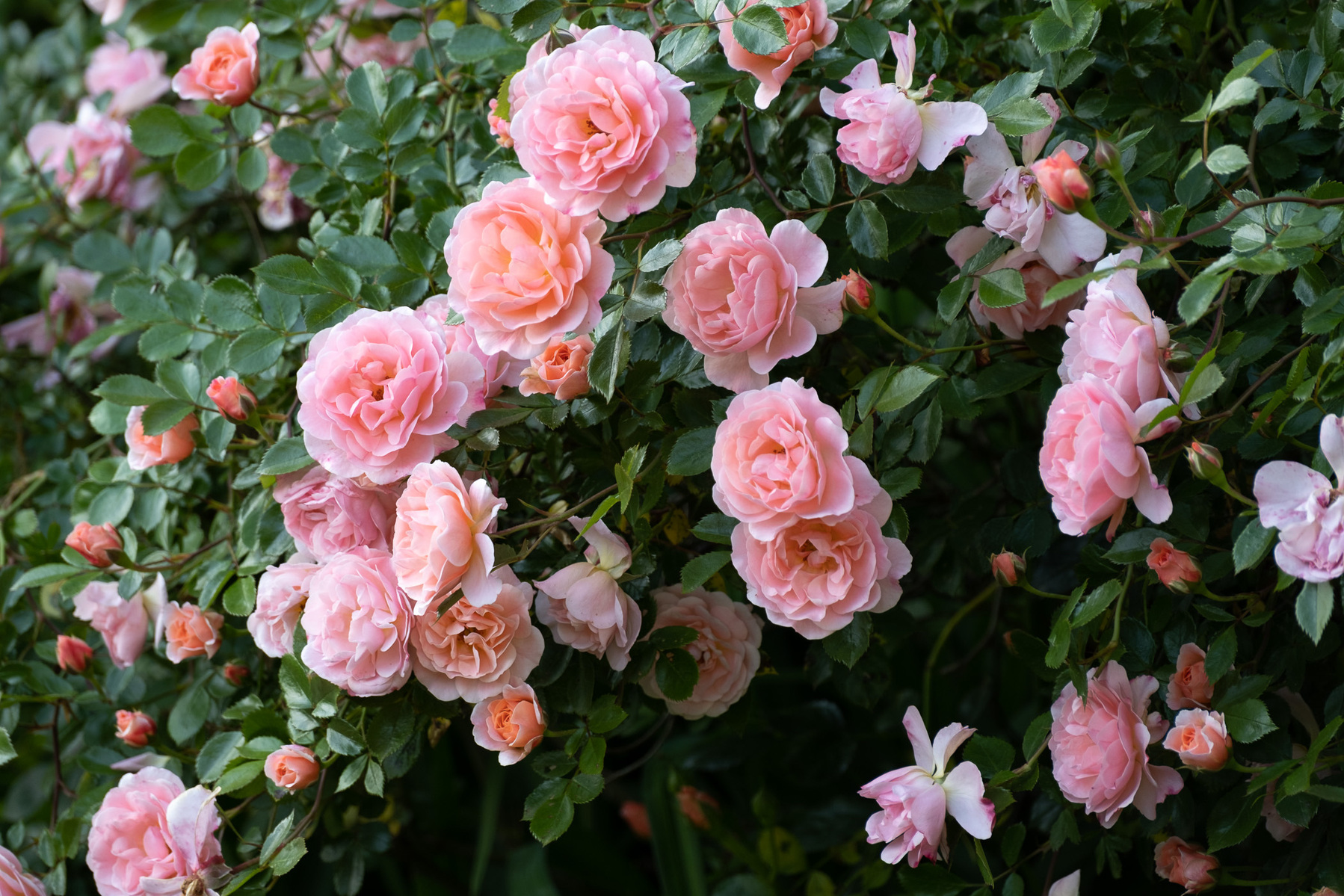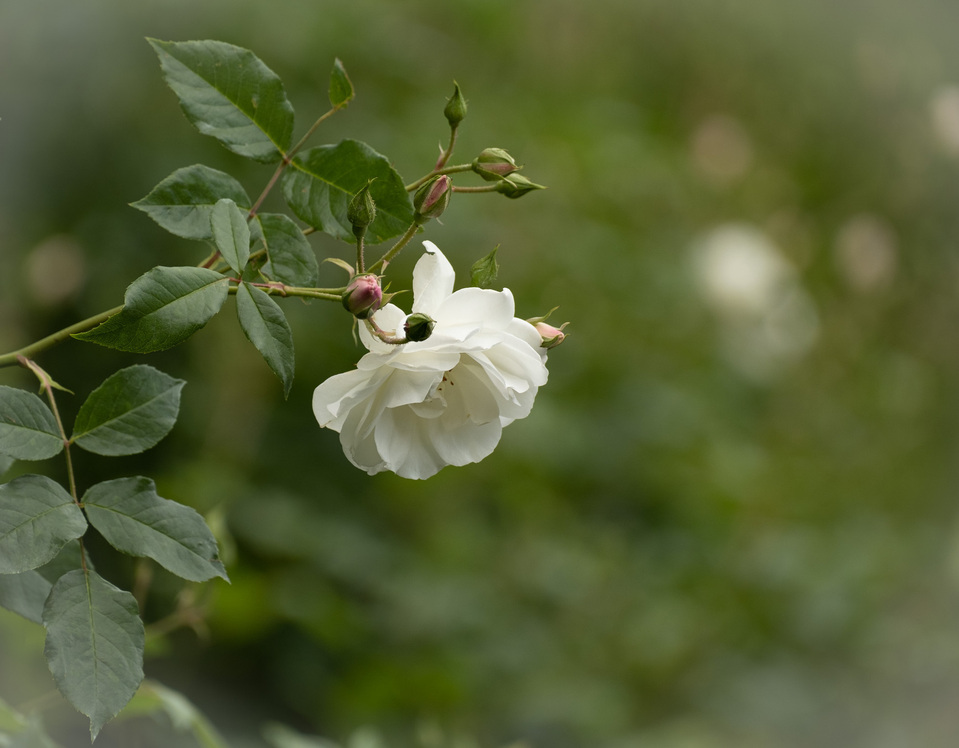Queen of all Flowers - Roses
May 13, 2021The queen of all flowers, the rose, graces us with decadent blooms from early May into June.
June is the best time of year to see, enjoy and photograph all varieties of roses. In the Virginia, Maryland, DC area, there is an abundance of rose gardens to visit and enjoy. Many roses will continue to bloom throughout the summer, but nothing compares with the burst of color and fragrance visible in June. Whether you love hybrid teas, shrub roses, climbers, old-fashioned heirlooms, or even the tiniest of miniature roses, this is the month to see them.
The rose has been a significant part of poetry, religion, art, literature, music, medicine, fashion design, perfume, and home decoration. The rose is one of the oldest flowers, traced back through fossils to over 35 million years old. “Empress Josephine Bonaparte, wife of Napoleon, was a passionate rose lover and collector. While her husband was acquiring an empire, she was acquiring property and 250 different roses from all over the world to add to the gardens of Malmaison, her chateau retreat outside Paris. The famed botanical illustrator Pierre-Joseph Redoute meticulously painted 117 of Josephine’s roses in his landmark watercolor book, Les Roses. His renditions are, even today, considered classic references to the differences in rose types.”
The beauty of a rose is undeniable but it can be challenging to photograph. Most rose gardens are in bright sun and altogether in the garden without a lot of space around them. Or the roses are climbing over structures, on walls making it hard to capture. Here are some tips that I have found helpful:
- Pick the best time of day to go out to your local rose garden. I like to go out to capture these flowers on cloudy days, early morning or late afternoon/early evening.
- Walk the rose garden first to enjoy its beauty and scents. Look for plants that you can easily access to photograph. Pick a plant that is shaded or something of interest to begin your photoshoot.
- Bring a light diffuser or umbrella with you to provide some shade.
- Use a variety of lenses. I will have my macro lens for close-up flowers that I can reach and for capturing tiny buds. I will also use my telephoto 70-200MM to reach flowers further away or more significant scenes of flowers. I also will pull out my 24-70 to capture wider shots of the garden rose beds. Being prepared with several lens options will give you the most success as each garden setting will be different.
- Rose plants can be challenging to determine a solid composition. Think about some creative options when in the rose garden. Fill the frame with the gorgeous large blooms is a great place to start. Capture tiny buds using leading lines of the stem. Depth of Field and a low aperture number can help you focus on a small part of the flower. Look for flowers with a story to tell, flowers leaning over or standing up tall in the garden.
- Take some scrapbook paper with you to hold behind the rose to provide a solid background.
- Capture a variety of close-up and full garden scene images. Create a rose garden series or story of your visit by capturing a variety of shots.
- When editing roses, you can take your images in several directions. Consider a moody, dramatic rose image. To create that, you can reduce the exposure a little, desaturate the colors, add a vignette. Adding texture to the image or editing it with a creative program like Topaz Studio can give it a painterly look.
http://Since the 1960s, the Memorial Rose Garden has welcomed visitors to Columbia Gardens. Today the garden contains nearly 200 rose bushes including hybrid tea roses, grandiflora, shrub and floribundas. If you are in VA/MD/DC area, here are my favorite spots to visit.
- Brookside Gardens has a large gorgeous rose garden. They have a large variety of colors, and the roses are easy to get close to photograph. I would encourage you to visit early; they open at 7 am or stay late to avoid the crowds. This is a popular free garden to visit.
- The Kathrine Dulin Folger Rose Garden. These pubic, free gardens are located on the national mall at the Smithsonian castle. They are easy to photograph. There are a large variety of roses as well as a vast section of shrub roses. I like to visit this garden early morning as there is free street parking out front and no tourists before 10 am when the museums open.
- Dumbarton Oaks garden. Located in Georgetown, they have a beautiful rose garden full of variety. This garden, designed in 1920 by landscape gardener Beatrix Farrand and then updated by her in 1941, has beautiful rose bushes that have withstood the test of time. The garden reminds me of an old English rose garden. It is stunning to capture. The gardens are only open late in the afternoon, and tickets are required.
- Bon Air Park in Arlington features a beautiful Memorial rose garden that features more than 120 different varieties of roses. This is a free community space and was established at the end of WWII.
- Columbia Gardens Cemetery, Arlington, has welcomed visitors sine 1960. Today the garden contains nearly 200 rose bushes including hybrid tea roses, grandiflora, shrub and floribundas.
- Mount St. Sepulchre Franciscan Monastery has some 1,200 rose bushes and climbers in beautiful groupings, curving halfway around the Monastery.
- Lewis Gitner gardens located in Richmond, is a great day trip. These gardens are beautiful, with a mix of formal garden beds and natural spaces. The rose garden is worth a visit to Richmond. The garden is large and again with a wide variety. Taking images of the roses is easy as you can walk right up to most of them. They are in bright, direct sun, so a diffuser will help. The garden has a small fee and is reservation only at this time.
Reference: https://www.chicagobotanic.org/plantinfo/roses_brief_history




















